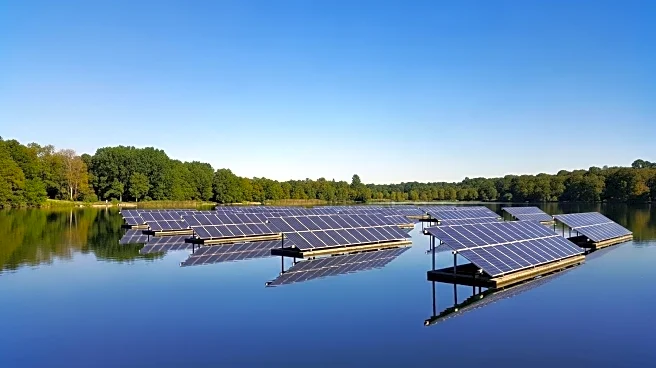What's Happening?
A team of researchers, including Wenjuan Wei, Xiaopeng Zheng, and Hui Huang, have developed all-conjugated block copolymers that serve as dual-function interfacial modifiers for perovskite solar cells (PSCs). These copolymers, which include polyfluorene and either quaternized polyfluorene or polythiophene blocks, are synthesized using sequential Grignard metathesis polymerization. The polymers are applied at the perovskite/C60 interface through solution drop-casting and spin-coating, followed by thermal evaporation of C60. The quaternary ammonium halides on the copolymers' side chains help passivate perovskite surface defects, while the polyfluorene co-block interacts with the C60 electron-transport layer to create ordered electronic pathways. This development aims to improve both charge extraction and long-term stability in inverted PSCs.
Why It's Important?
The advancement in perovskite solar cell technology is significant for the renewable energy sector, as it addresses two critical challenges: efficiency and stability. By enhancing the charge extraction and stability of PSCs, this research could lead to more durable and efficient solar panels, potentially reducing the cost of solar energy and increasing its adoption. This could have a substantial impact on the U.S. energy market, promoting cleaner energy sources and contributing to the reduction of carbon emissions. The development of these copolymers could also stimulate further research and innovation in the field of solar energy materials.











